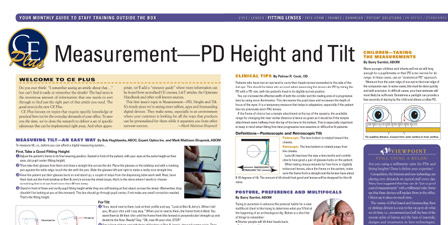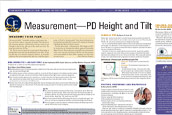Sponsored by ZEISS
By Marisol Rodriguez, ABO-AC, NCLEC

“The definition of genius is taking the complex and making it simple.” –Albert Einstein
The automobile first came on the scene in the late 19th century. The manual automotive transmission was invented in 1894. It was the industry standard until 1921, when the automatic transmission was invented. It was “the latest and greatest” with sophisticated sensors and technology. Look where we are now—we have cars that park themselves. Imagine where we will be in another 100 years. But like most great ideas, it took time for the more advanced automatic transmission to replace the standard stick shift manual transmission to become the new industry standard.
For over a century, ZEISS has been pioneering excellence in the optical industry with cutting-edge technology and innovation to improve the patient’s visual experience and satisfaction with their eyewear. Now they have set a new and higher standard for finished single vision (FSV) and semi-finished single vision (SFSV) lenses with the introduction of ClearView.
ClearView is a breakthrough technology in stock and semi-finished single vision lenses that optimizes the lens blanks using freeform technology applied to the lens mold, vastly improving peripheral lens optics. This breakthrough is important to our industry considering that single vision lenses make up over 75 percent of eyewear transactions. Stock FSV and SFSV lenses provide a cost-effective staple for eyecare professionals and labs with a quick turnaround time. ZEISS recognized that standard stock and semifinished single vision lenses had compromised peripheral optics. So, ZEISS decided to “take the complex and make it simple.” Why shouldn’t every single vision patient be fit with lenses that are enhanced with freeform technology, whether a personalized freeform optimized lens or the new ZEISS ClearView freeform optimized stock and semi-finished single vision lens?
Meet ZEISS ClearView, freeform optimized stock and semi-finished lenses made with ZEISS patented ClearForm technology which incorporates CORE technology to provide the value of the Center of Rotation (CoR) of the eyes. This metric varies by prescription. Why is this important? I am a high myope and compared to a normal-sighted person (emmetrope), my eyeball’s length can, on average, be about 4 mm longer. Therefore, the way my eyes rotate relative to the back surface of the lens will differ from a normal or hyperopic eye. With ClearForm and CORE technology, 700 parameters are optimized for a lens quadrant, which is then mirrored twice to cover the entire lens. The result, superior edge to edge clarity and thinner profile in stock finished and semi-finished lenses.
I spoke with a dozen or so opticians currently fitting ClearView lenses across North America, and the consensus was that they are now able to offer single vision stock lenses that are digitally optimized, quickly and conveniently. Many of these opticians have chosen to inventory ClearView lenses in their in-house finishing laboratories and offer state-of-the-art finished lenses to all of their single vision patients—many times with same or next day service—setting themselves apart from their competition.
One story in particular stood out: The optician had a patient with an emergency walk into their dispensary. Their glasses had broken, and they were unable to wear their contact lenses from overuse. They opened with, “I just need something to get me by. I’ll return to get something I love.” The optician had ClearView stock lenses on hand and let the patient know they did not have to settle, encouraging them to get a pair they love, incentivizing a healthier routine with contact lens use. The patient chose their favorite frame, the optician paired them with ClearView lenses. The patient picked up the glasses the next day, and they were elated, commenting that the entire lens seemed as clear as it did with their contacts, and thrilled that they were not thick, as they had settled for in the past, a major factor in their preference for contact wear over glasses.
Just as the automatic car transmission made driving more convenient and comfortable, these lenses provide clear vision at all viewing angles for a better visual experience in stock and semi-finished lenses. While personalized freeform lenses are still the best because they are optimized to compensate for the optical errors based on position of wear, it is understood that only a small percentage of single vision wearers choose this option. The majority of single vision lens wearers can now be upgraded from standard stock and semi-finished lenses to freeform optimized ClearView lenses. ZEISS has pushed the boundaries, creating an unmatched category elevating stock finished and semi-finished lenses to a new level of excellence and patient satisfaction. Based on patient response to this lens, the name ClearView is apropos! To learn more, read these free CE courses: “Lens Design and the Eyes Center of Rotation” and “A Revolution in Standard Single Vision Lenses” at 2020mag.com/ce.












